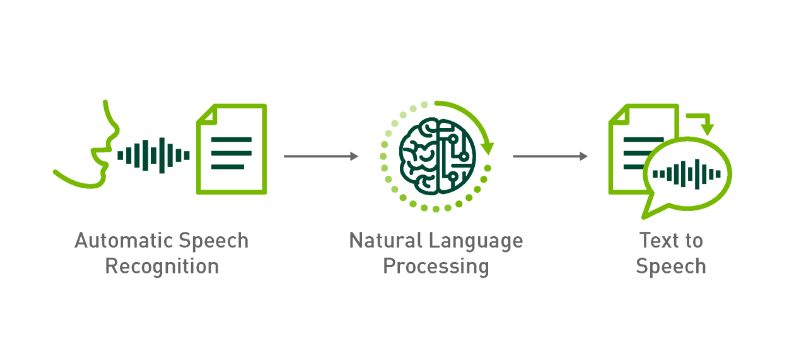
In a world where technological advancements are reshaping the way we interact with our devices, voice recognition technology stands out as a game-changer. Gone are the days when typing or clicking was the only means of communicating with computers. Today, hands-free interaction through voice commands has become increasingly prevalent, revolutionizing the way we engage with our devices and enhancing accessibility for individuals with disabilities. Let’s delve into the world of voice recognition technology and explore its applications, benefits, and future possibilities.
The Rise of Voice Recognition Technology
Voice recognition technology, also known as speech recognition or voice-to-text technology, has evolved significantly over the past few decades. What once seemed like science fiction is now a reality, thanks to advances in artificial intelligence and machine learning algorithms.
The concept of voice recognition dates back to the 1950s, but it wasn’t until the late 20th century that practical applications started emerging. Early systems were limited in accuracy and vocabulary, but rapid advancements in computational power and algorithms have led to significant improvements.
Applications Across Industries
Voice recognition technology has found applications across various industries, transforming the way we interact with computers, smartphones, smart speakers, and other devices. Here are some notable examples:
1. Virtual Assistants:

Virtual assistants like Amazon’s Alexa, Apple’s Siri, Google Assistant, and Microsoft’s Cortana have become ubiquitous in households and workplaces. These intelligent voice-controlled systems can perform tasks such as setting reminders, playing music, controlling smart home devices, and providing information—all through natural language commands.
2. Accessibility:
Voice recognition technology has opened up new possibilities for individuals with disabilities, allowing them to interact with computers and mobile devices using only their voices. This has greatly enhanced accessibility and independence for people with motor disabilities, visual impairments, and other challenges.
3. Automotive:

Voice recognition technology has become a standard feature in modern automobiles, enabling hands-free operation of infotainment systems, navigation, phone calls, and messaging while driving. This not only improves safety by reducing distractions but also enhances the overall driving experience.
4. Healthcare:
In the healthcare sector, voice recognition technology is being used to streamline documentation processes for physicians and healthcare professionals. By allowing doctors to dictate patient notes and medical records using voice commands, these systems save time and improve the accuracy of documentation.
Benefits of Hands-Free Interaction

The widespread adoption of voice recognition technology has brought about several benefits:
1. Convenience:
Hands-free interaction allows users to perform tasks quickly and efficiently, without the need for physical input devices. Whether it’s sending a text message while driving or setting a timer while cooking, voice commands enable seamless multitasking.
2. Accessibility:
Voice recognition technology has made computing more accessible to individuals with disabilities, empowering them to navigate digital environments and interact with devices independently.
3. Safety:
In scenarios where manual interaction with devices can be dangerous or impractical, such as driving or operating machinery, hands-free interaction through voice commands improves safety by minimizing distractions and allowing users to keep their focus on the task at hand.
4. Natural Interaction:
Voice commands enable a more natural and intuitive way of interacting with computers and devices, mimicking human conversation and reducing the learning curve associated with traditional input methods.
Future Possibilities
As voice recognition technology continues to advance, we can expect to see even more innovative applications and improvements in accuracy, speed, and language support. Some future possibilities include:
- Multimodal Interaction: Combining voice commands with other input modalities such as gestures and eye tracking to create more immersive and intuitive user experiences.
- Contextual Understanding: Enhanced AI algorithms that can better understand context and intent, allowing for more natural and conversational interactions.
- Personalization: Voice recognition systems that adapt to individual users’ voices, preferences, and speech patterns for improved accuracy and user experience.
- Integration with IoT Devices: Voice-controlled smart home devices and Internet of Things (IoT) devices that seamlessly integrate with voice recognition technology for hands-free control of various household appliances and systems.
Let’s delve deeper into some of the key aspects of voice recognition technology and its implications for various industries:

Advanced Natural Language Processing (NLP)
One of the most significant advancements in voice recognition technology is its ability to process natural language more accurately and understand complex commands. Natural Language Processing (NLP) algorithms enable systems to interpret the meaning behind words and phrases, allowing for more contextually relevant responses.
For example, modern virtual assistants can understand follow-up questions, context switches, and even natural language variations, making interactions feel more like conversations with a human assistant rather than rigid commands.
Industry-Specific Applications
Voice recognition technology is not limited to consumer applications like virtual assistants. It has also found numerous applications across industries, each with its unique set of challenges and requirements:
- Retail: Voice-enabled shopping experiences allow customers to search for products, place orders, and track shipments using voice commands, enhancing convenience and efficiency.
- Finance: Voice recognition technology is being used for biometric authentication in banking and financial services, providing an additional layer of security for sensitive transactions.
- Education: In the education sector, voice recognition technology is being leveraged to develop interactive learning platforms that respond to students’ spoken questions and commands, creating more engaging and personalized learning experiences.
Privacy and Security Considerations
While voice recognition technology offers many benefits, it also raises concerns about privacy and security. Voice data is highly sensitive, as it contains unique biometric information that can be used to identify individuals. Therefore, it’s crucial for companies to implement robust security measures to protect users’ voice data from unauthorized access and misuse.
Additionally, there are concerns about the potential for voice recognition systems to misinterpret commands or respond inaccurately, leading to unintended consequences. Continuous improvements in AI algorithms and rigorous testing processes are essential to minimize these risks and ensure the reliability of voice-enabled systems.
The Role of Multimodal Interaction
While voice recognition technology has made significant strides in enabling hands-free interaction, there are situations where a multimodal approach combining voice commands with other input modalities may be more effective. For example, in noisy environments where speech recognition accuracy may be compromised, incorporating gesture-based or touch-based input methods can enhance the user experience.
Ethical Considerations
As with any emerging technology, voice recognition raises important ethical considerations regarding data privacy, algorithmic bias, and the potential impact on society. It’s essential for developers and policymakers to address these ethical concerns proactively and implement safeguards to ensure that voice recognition technology is used responsibly and ethically.
Conclusion
Voice recognition technology has come a long way since its inception, transforming the way we interact with computers and devices across various industries. From virtual assistants and smart home devices to automotive systems and healthcare applications, voice recognition technology offers numerous benefits, including improved accessibility, convenience, and safety.
As advancements in AI and machine learning continue to drive innovation in voice recognition technology, we can expect to see even more sophisticated applications and improvements in accuracy and reliability. However, it’s essential to address privacy, security, and ethical considerations to ensure that voice recognition technology is deployed responsibly and benefits society as a whole.
